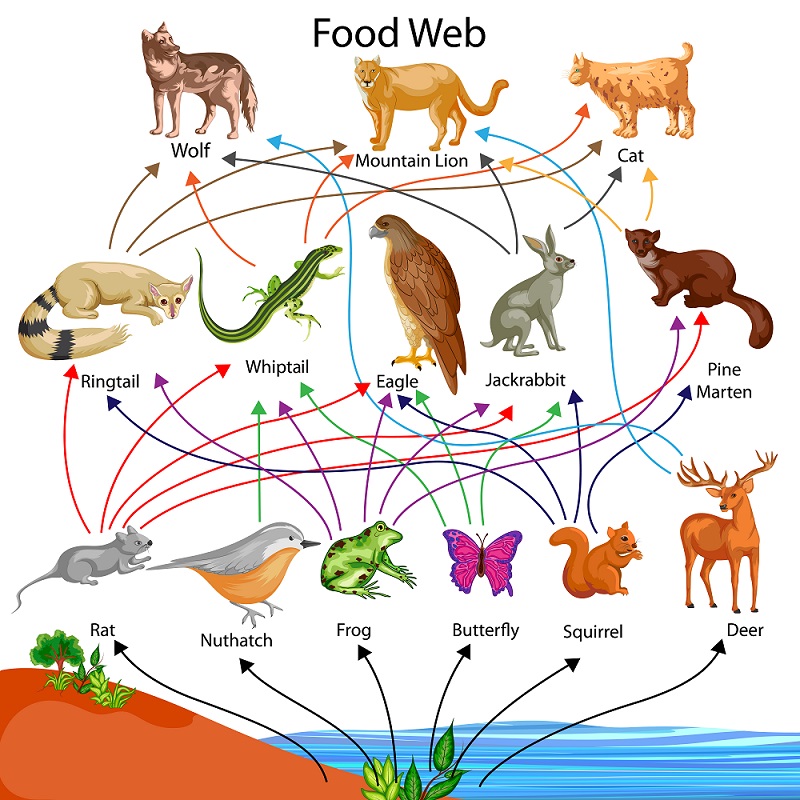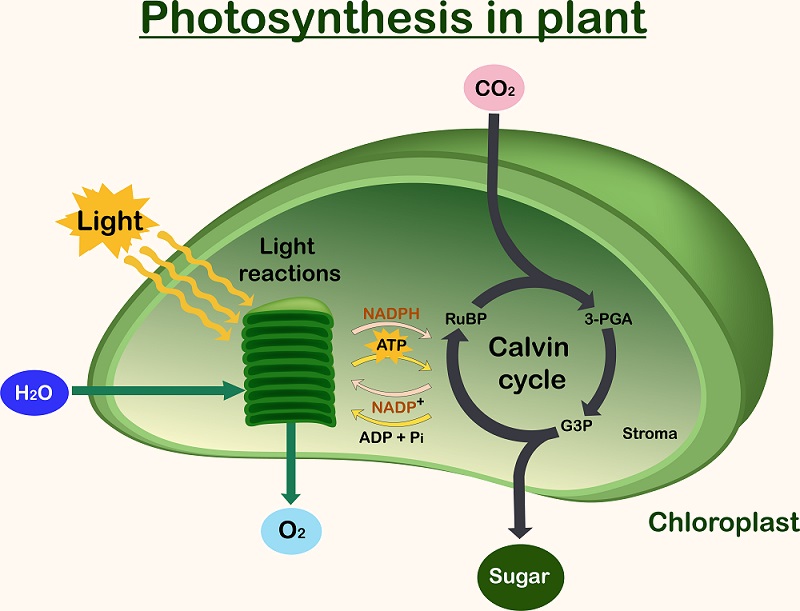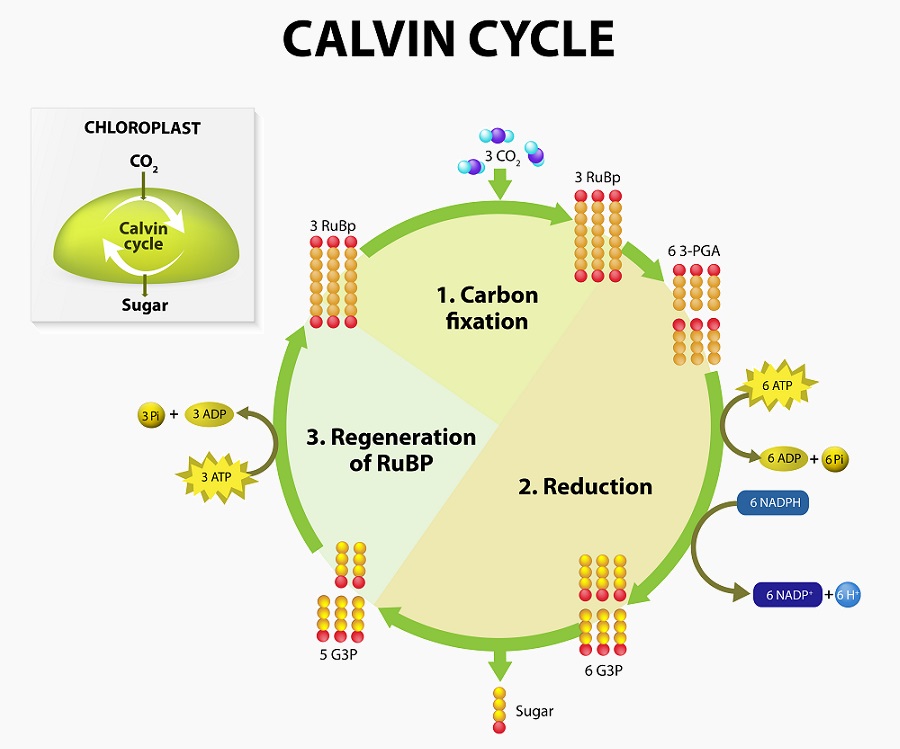[LS1-5] Photosynthesis Modeling
This standard focuses on photosynthesis, specifically on the inputs and outputs that allow sunlight energy to be capture and used to create new bonds stored in sugar molecules.
Resources for this Standard:
Here’s the Actual Standard:
Use a model to illustrate how photosynthesis transforms light energy into stored chemical energy.
Standard Breakdown
To understand this standard, we will start with the view from the top and work our way down to specifics.
Photosynthesis
Photosynthesis is a cellular process that converts sunlight energy into the energy used to make the bonds in sugar molecules. All organisms (plants included) use these sugar molecules to create ATP, the molecule that provides energy to many other cellular reactions. Therefore, cellular respiration (the process of creating ATP from sugar) is complementary to the process of photosynthesis.

From a biosphere perspective, photosynthesis drives all life on Earth. As such, plants (or algae in aquatic environments) represent the primary producers in food webs. All other animals derive their energy from sugar, which is only synthesized in plants. This energy is changed and recombined as it works its way up the food web, as it is used to create functioning cells in many different organisms, as seen above. Let’s look a little closer, at how photosynthesis works on a cellular level.
Organelles of Photosynthesis
As sunlight hits a plant cell, it travels through the mostly transparent cellular membrane. Inside a leaf cell, there are many chloroplasts – organelles with the sole function of carrying out photosynthesis. Inside these organelles are stacks of discs made of cellular membranes. These discs – called thylakoids – are covered in pigment-holding proteins. The pigments absorb some colors of light but reflect back only green. That is why all plants (or most) have a green color.

The light energy is passed through the pigment into Photosystems I & II. Effectively, this complex system of membrane proteins uses sunlight energy to create ATP. The ATP carries energy to the Calvin Cycle, where it is stored in sugar molecules (glucose). Sugar can then be used by plant cells with inadequate light through the process of cellular respiration – carried out in mitochondria.
A little clarification:
The standard contains this clarification statement: Emphasis is on illustrating inputs and outputs of matter and the transfer and transformation of energy in photosynthesis by plants and other photosynthesizing organisms. Examples of models could include diagrams, chemical equations, and conceptual models. Let’s look at this clarification a little closer:
Inputs and Outputs of Photosynthesis
Overall, photosynthesis is a process that takes water, carbon dioxide, and sunlight, and converts it into oxygen and glucose. There are a large number of biochemical steps involved, but these steps are generally divided into two major processes: the light reactions and the Calvin Cycle.

During the light reactions, light energy is used to pump proton (H+) ions across the thylakoid membrane. This creates a “chemical pressure”, which is used to power ATP synthase, the same protein complex that produces ATP in mitochondria (only with the proton pump being driven by light energy instead of chemical energy). ATP can only be stored for a short time, at a maximum concentration within a cell. So, the energy must be transferred to another molecule for storage. That’s where the Calvin Cycle comes in. During the Calvin Cycle, energy stored in ATP is used to form sugar molecules, which store a large amount of energy in their bonds. The Calvin Cycle uses carbon dioxide molecules and the energy captured during the light reactions to form new carbon-carbon bonds, leading to the formation of glucose (which has 6 carbon atoms).
What to Avoid
This NGSS standard also contains the following Assessment Boundary: Assessment does not include specific biochemical steps. Here’s a little more specificity on what that means:
Biochemical Steps of Photosynthesis:
Photosynthesis is so well-researched that we have information on the exact chemical reactions needed at every step of the process. While students should be introduced to the general molecular pathways through which photosynthesis functions, there is no need for rote memorization of these steps. For instance, a key starting step in the Calvin Cycle is the carboxylation of a ribulose-1,5-bisphosphate molecule via the RuBisCo enzyme. While it is unnecessary to know the names of these molecules specifically, students should know that the Calvin Cycle essentially uses carbon dioxide and energy to create precursors of glucose. It’s called a “cycle” because the reactions form a circular pathway leading to the creation of half a glucose every time 3 carbon dioxide molecules are added.

